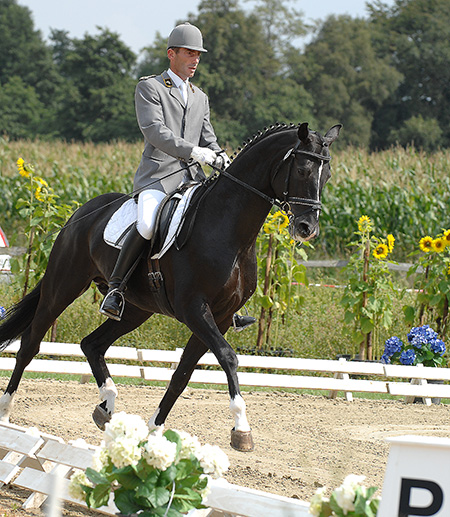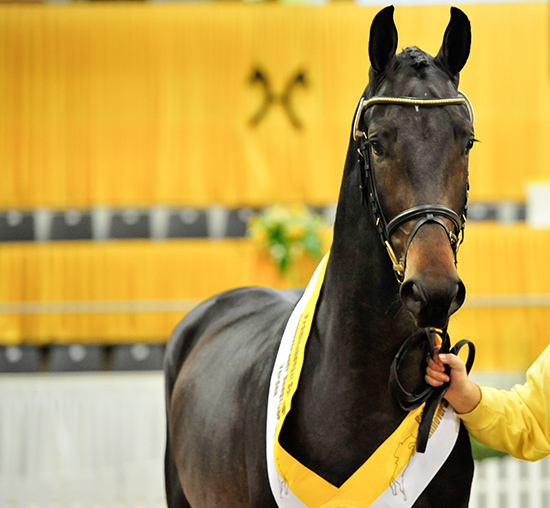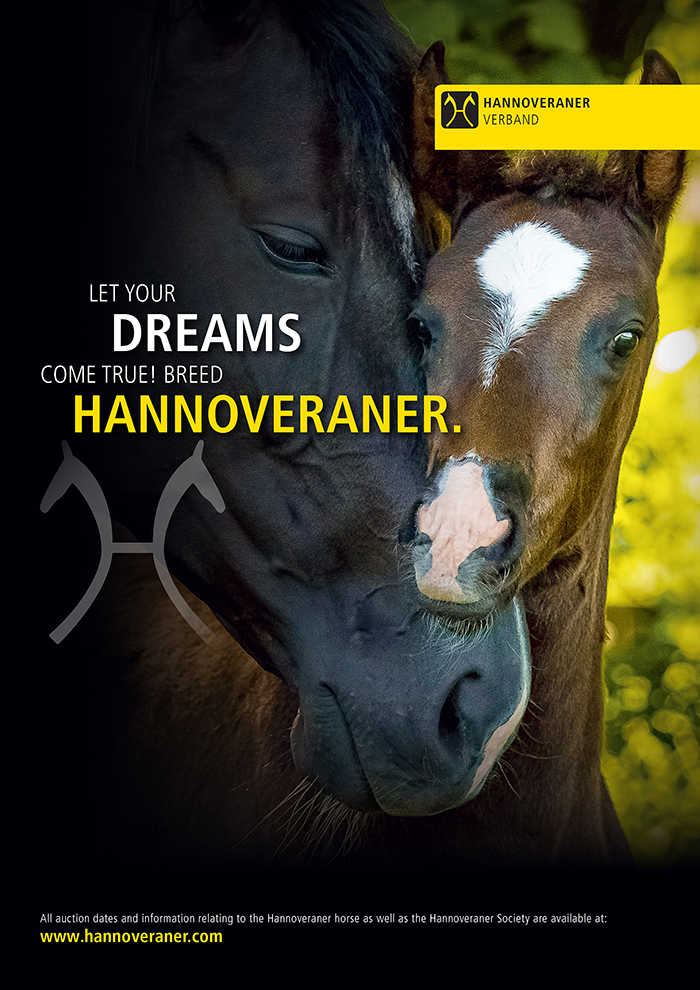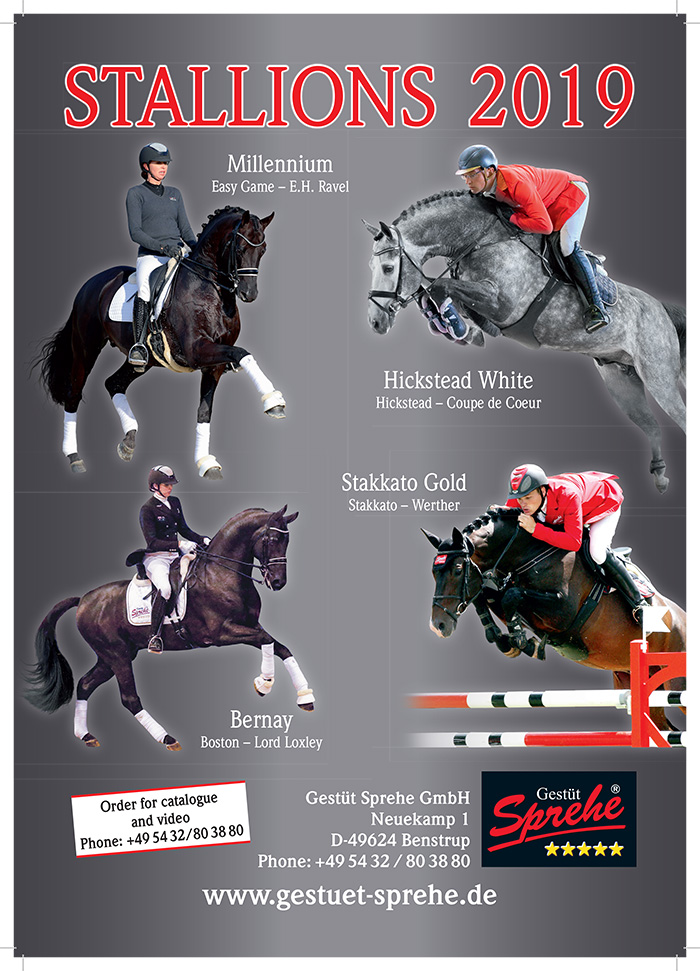Christopher Hector discusses the latest trends in the Hanoverian breed with Ludwig Christmann
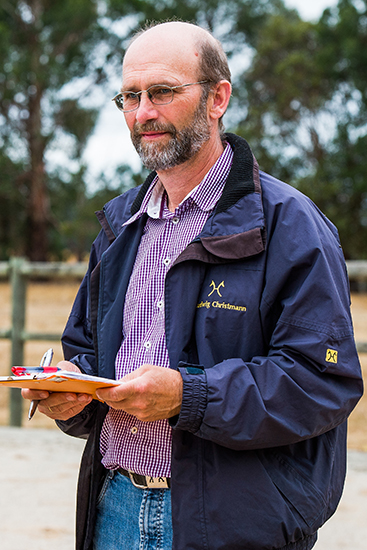
Dr Ludwig Christmann was my first contact with the Hanoverian Verband several decades ago when he led the Study Tours around the breeding district. His knowledge, and patience, made it so much easier to get a grip on the Hanoverian system. Since then he has been a constant source of information, advice and friendship.
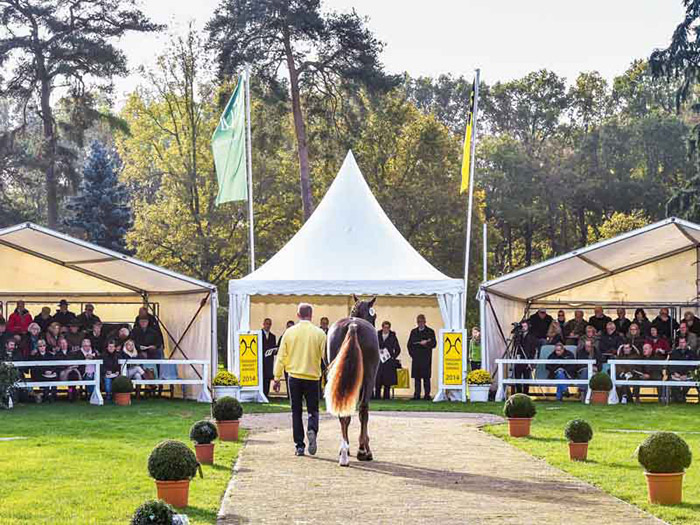
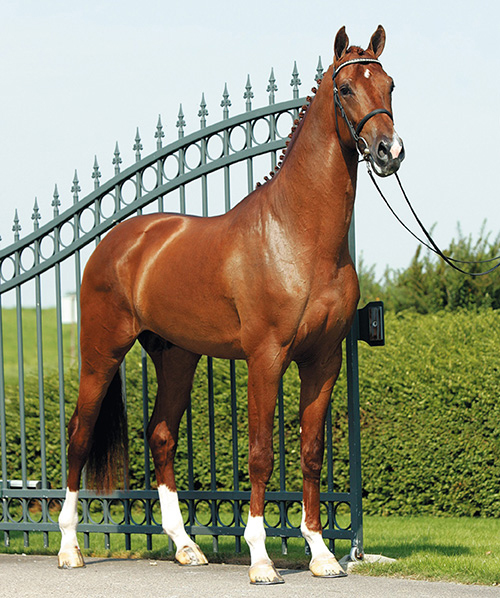
Vivaldi
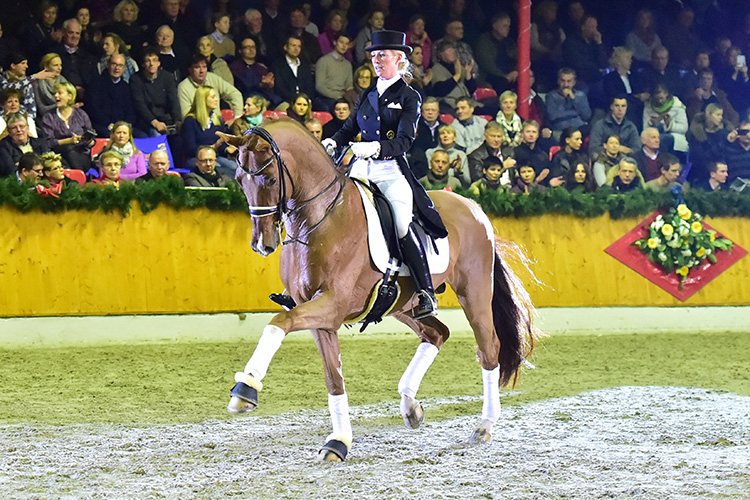
Vivaldi, the Dutch sire who dominated this years Hanoverian Licensing
It was great to catch up with him at Frankfurt show, and somewhat of a surprise to find that his highlight for the year was the Stallion Licensing, dominated by the Dutch sire, Vivaldi.
The most influential stallion for the licensing was Vitalis – what will he add to the Hanoverian mix?
“It is not only Vitalis, it is Vivaldi in general. When you look at the sons and grandsons of Vivaldi, you can see his qualities.”
So you think it is Vivaldi more than Vitalis, certainly in Holland they think Vivaldi is the most exciting younger stallion…
“I remember when he first started as a stallion there was a question mark behind him, it was felt that Vivaldi would not be a Grand Prix producer but now we see offspring of Vivaldi competing in Grand Prix. At our licensing, Vivaldi was the most influential stallion, I think he had 16 stallions with his blood at the licensing. The riders like the mix of traditional Hanoverian blood, particularly from the ‘D’ line, and some Dutch blood.”

“The highlight would have been our stallion licensing, the result was the best we have ever had – not just the prices the stallions brought, but we had very good feedback, especially from the dressage people, there was fantastic quality.”
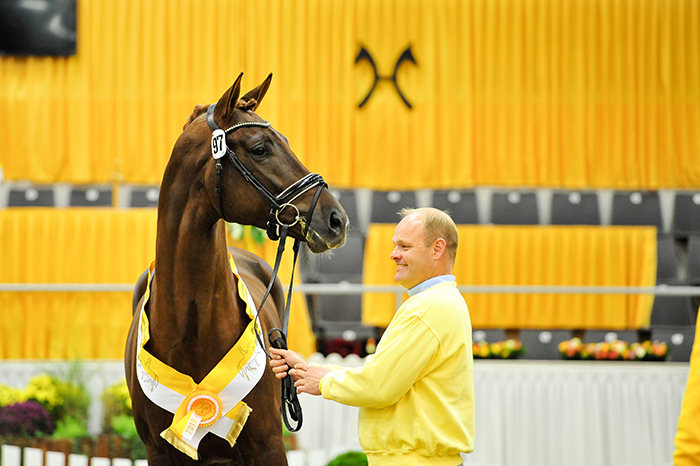
The chestnut is the two-million-stallion, Vivaldi/DancierDam sire of the 2 million euro stallion, DancierKannan/Stolzenberg colt, who was the highest price for a show jumper, bought by Irish rider, Cian O’Connor.
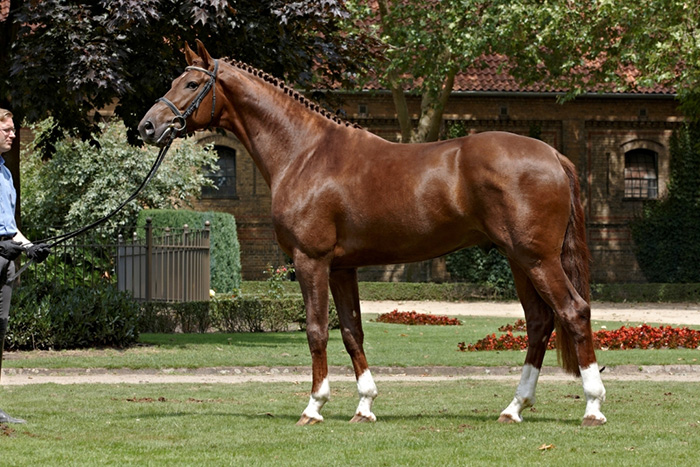
The Vivaldi son, Vitalis, a previous Bürg-Pokal winner
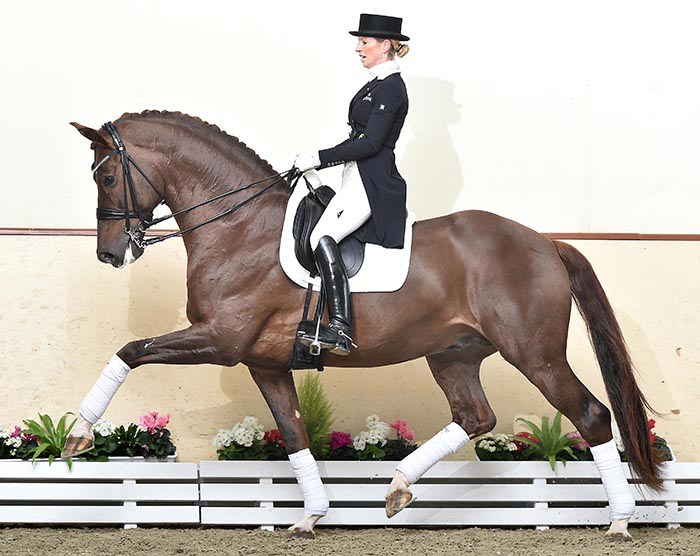
more follows
What do you think that Dutch blood is adding to the mix?
“I think Vivaldi is a pre-potent stallion, a good type, and what you get from the Dutch horses is the spectacular front legs, and that is what the dressage riders want. They are very active horses in front, the Dutch horses. But you also need a good, active hind leg and the push from the ground to succeed at the highest level. ”
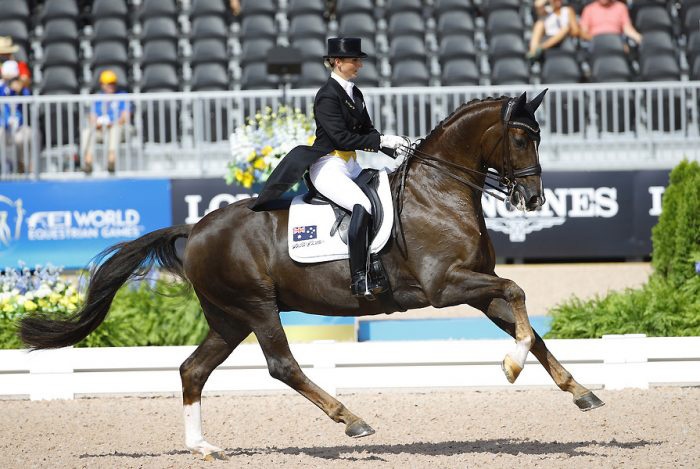
Kristy Oatley’s Du Soleil, shows the good hind leg from his sire, De Niro
“On the other hand, the Dutch are using more and more German blood to improve the rideability of their horses. When you look at the Dutch population and the Hanoverian population, they are two different types of horses, and I think the cross helps us make a step forward. Of course, we also have to be careful that we keep the active hind leg – one of the secrets of why the De Niro’s have been so successful is that the hind leg is always very good, very strong and very much under the body. We get more uphill horses from the Dutch horses, sometimes maybe the neck carriage is a little too high, so we have to be careful that we are not losing the suppleness of our horses in the back – that is the strength of our horses, but not the strength of the Dutch horses. Hopefully we are creating a horse that combines the best of both populations.”
“I think when you look at the top stallion at our licensing, he had good movement, including a good walk. He was supple enough. This is what you want to do when you breed – you try something new, new genetics, then you get a big variation of different types and you have to select the ones that are useful for you. There is always some risks when you breed different types, like the Hanoverian and the Dutch type, you can get the worst of both, but you can also get the best of both. That is what breeding is about.”
When I look at the results of dressage competitions at the highest levels, the successful Grand Prix horses are nearly always sired by successful Grand Prix horses, so I worry when I look at a horse like Vivaldi, who never got out of the Small Tour – do you feel that if you are breeding for the big sport, it is better to use a stallion who has competed Grand Prix himself?
“I think you need both. I think you need the stallion’s own performance and you need also the genetics. Sometimes you have a Grand Prix horse but not with the genetics behind that performance and that can also be a little bit risky… look at Cosmo for example…”
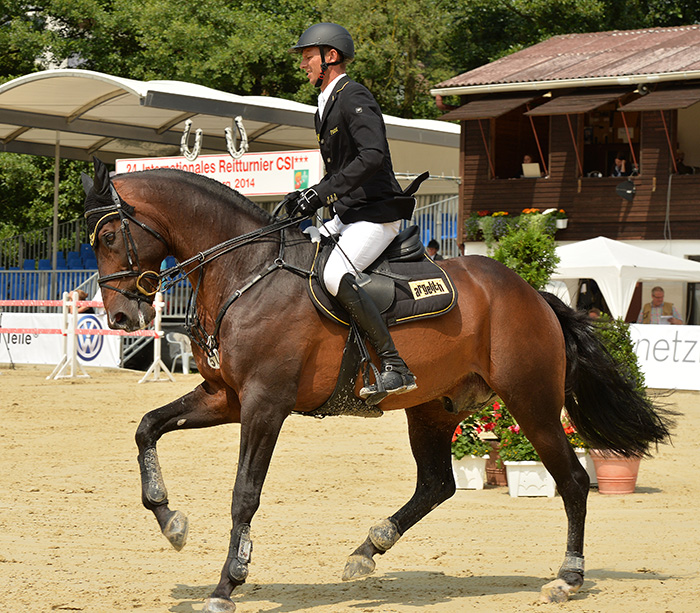
Cosmo’s sire, the show jumper Van Gogh, sire of show jumpers, but dressage horses?
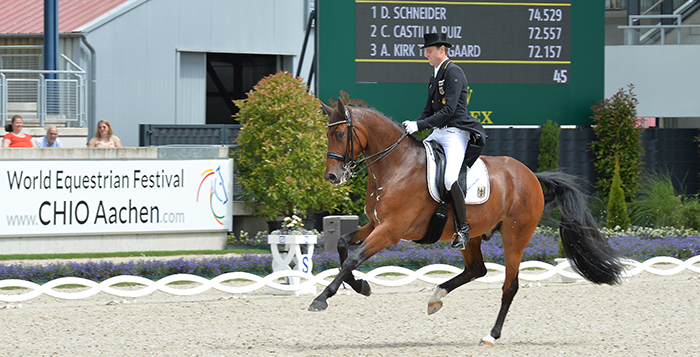
He’s a wonderful horse, I don’t think we would want to breed to Cosmo…
“When you look at Cosmo’s pedigree, this is not the pedigree you want for a Grand Prix horse.”
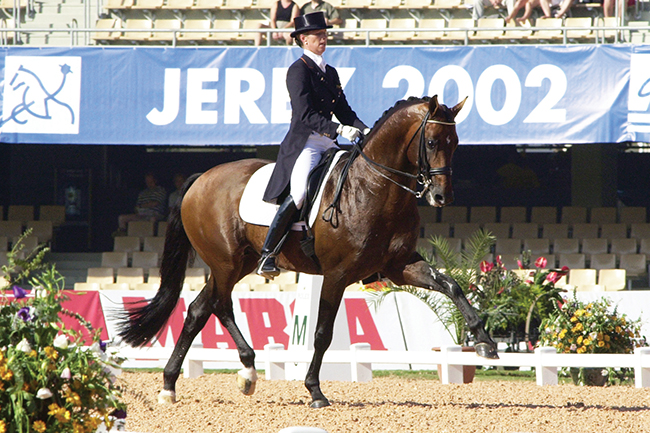
Krack C and Anky van Grunsven
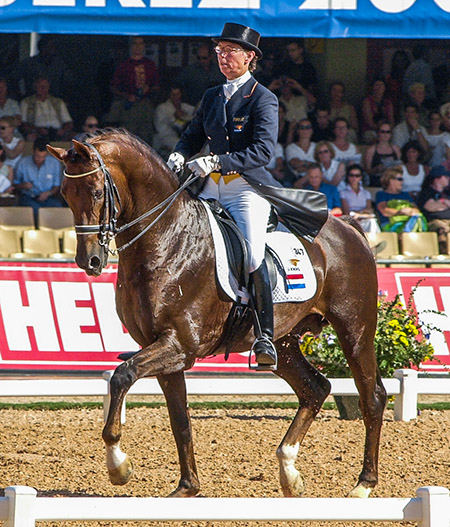
Jazz and Tineke Bartels – both Krack C and Jazz, in Vivaldi’s pedigree,
both competing at the WEG in 2002
“When you look at the pedigree, Vivaldi has the pedigree of Grand Prix competitors, Krack C and Jazz.”
more follows
“In Germany, the breeders want to breed a saleable horse, that is the most important thing. There are some breeders who want to breed a Grand Prix horse, but the majority want a horse that is saleable, a horse that is a super young horse. But if you want to breed a Grand Prix horse, the stallion should have both the genetics and the own performance.” 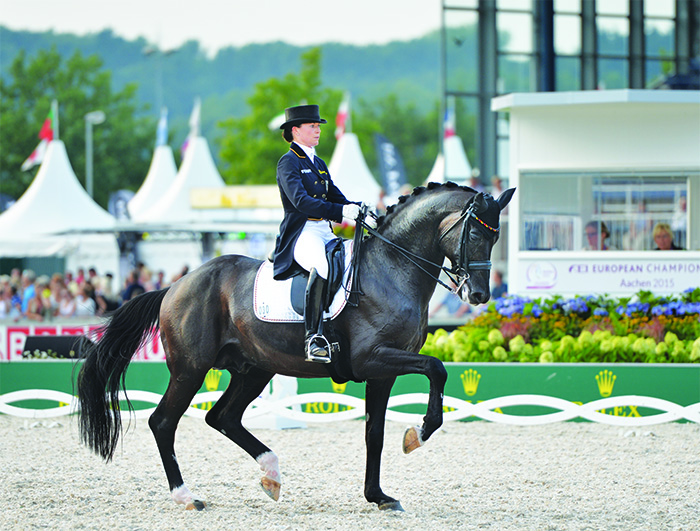
Desperados and Kristina Bröring-Sprehe
“I think the talent for collection, for piaffe, that is passed on. Look at the results – look for example at Desperados, then you already have four generations Grand Prix on the sires’ side – Desperados himself, De Niro, Donnerhall and Donnerwetter, all Grand Prix horses.”
“I think this is where the trend is going. Look at jumping and you see the same trend, the top horses, most of them have sires that were 1.60 jumpers, I think that is the trend.”
The other big news for the year for breeders was the fragile foal controversy, do you think that was handled well?
“There was a lot of excitement about it, lots of opportunities in the media and on facebook to get excited, but I think it was handled carefully enough. The discussion came up towards the end of the breeding season and we immediately informed our breeders about this defect, and many breeders responded by having their mares tested. Now if you look at the new 2019 Stallion Book, you will see that the WFFS status of most of the stallions is recorded. We couldn’t do too much for the 2018 breeding season, but we recommended that the breeders get their mares checked, so you know the status, and then ask the stallion owner the status of the stallion, but at that time, not so many of the stallion owners had responded. For this year, we are not publishing a stallion for 2019 who is not tested and we are publishing all the testing results in the stallion directory.”
“WFFS is not something new, I think it has been in the population for a long time.”
Do you think it has become more of an issue now, whereas in the past the stallions were live covering, so not so many mares, whereas now you have stallions covering hundreds of mares in a year, so such a genetic defect can be more widely disseminated?
“I don’t have that impression – I think we also don’t know enough about it. I talked to many vets in Germany, asking them how many foals they have seen that were born with this problem, and talked to many old breeders. I talked to the lab that does the tests in Germany and they said they might get three or four foals per year.”
But isn’t that obscured by the fact that lots of these WFFS foals never make it through the pregnancy, they are aborted, so they don’t show up – just another lost pregnancy… I started looking at the breeding history of the mares who gave birth to some of the better known WFFS positive stallions, and a lot of them had many years when those mares did not produce a live foal…
“At the moment there is a lot of speculation, but we now get more data and pursue the research over the next few years. The good thing now is that the breeders know this, and with the information on the mare and the stallion, they can avoid producing any of these WFFS foals. It is positive that it has been discovered and that we can now control this disease.”
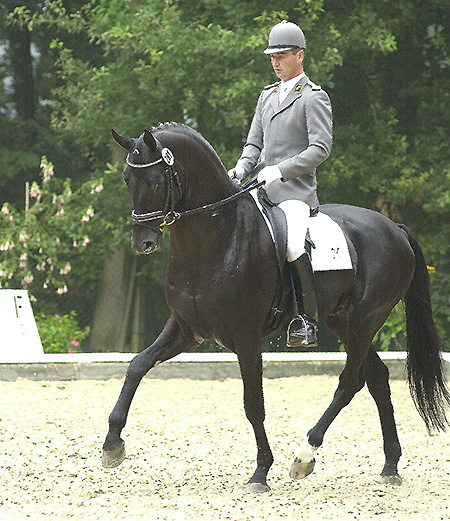
Don Frederico, sire of Grand Prix horses, including Isabell Werth’s Don Johnson
Don Frederico has been a very good stallion for you, do you think it will greatly affect his breeding career now he has been identified as positive?
“This is also something that we don’t know yet, how will the breeders react? If you have a mare that is not a carrier, and you have a special stallion in mind, even if that stallion is a carrier, then you get a sound foal, so it is possible to use a stallion that is a carrier but the mare must be free of it.”
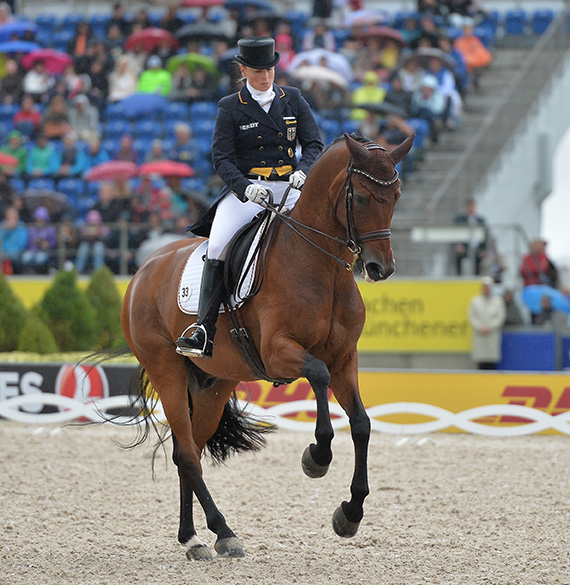
Don Johnson and Isabell Werth, Grand Prix winners
There has been a lot of speculation about Donnerhall, and when you look at the breeding history of his dam, she has many years in which she doesn’t have foals, and you would think they would try very hard to get foals from the mother of Donnerhall… are we suspicious?
“I don’t want to speculate about that, but we think that maybe 10% of the population might be carriers, that is not small, but it is also not huge. Now with the possibilities that we have, I think we can live with it very well, but I don’t want to speculate about what happened in the past…”
Anyway, I was thinking, if Donnerhall was a carrier, it was lucky we didn’t have WFFS testing at the time because we might have got rid of the greatest dressage stallion of them all…
“This is something to see in the next breeding season – how do the breeders react when there is a positive stallion. From our point of view at the Verband, we want all stallions tested, also the new stallions for the licensing but it is not a selection trait, so we are not selecting for it. We don’t say, he is positive then he cannot be used as a stallion. I think we all have to learn to live with it.”
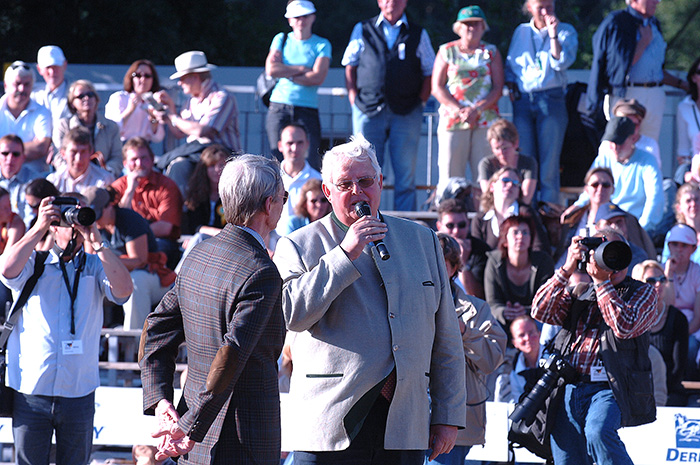
Dr Bade addresses spectators at the Bundeschampionships
When you were talking earlier about combining the Dutch and the Hanoverian populations to get the best of both, I remember when I first met you on the excellent Hanoverian Study Tours in the 80’s, Dr Bade who was in charge of Celle at the time, didn’t want any Donnerhall stallions because he didn’t want to promote an Oldenburg stallion – we’ve come a long way from that very narrow localised view…
“The times have changed and our aim is to breed the most competitive horses and so we have become more open with the genetics that we are using. When you breed for the top sport, most riders don’t say I want to ride a Hanoverian, they say I want to ride the best horse possible. If there are genetics outside of our breed and we think they are useful, then we should use them. The Hanoverian has always been open, it has not been a closed breed like the Holsteiner or the Trakehner. In the 60s we used Thoroughbreds and Trakehners and Anglo Arabs to refine, and they started new bloodlines. I think you can make more progress when you are open for new genetics- look at Furioso II and what his blood has done. When you look at it, it would have been a big mistake to be too closed.”
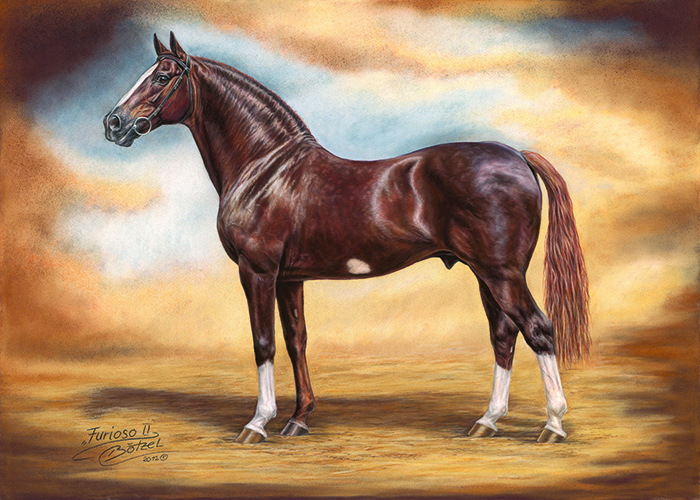
Furioso II, perhaps the most influential Warmblood stallion of them all… and he came from France!
“Donnerhall at that time was not acceptable from his pedigree, because the mother was the old Oldenburg breed, so it needed a special decision from our board that he is accepted. Our breeders wanted him, so it was not a problem. In general, for an outside stallion to be approved, he needs a higher score in the licensing, and I think this system has worked well so far.”
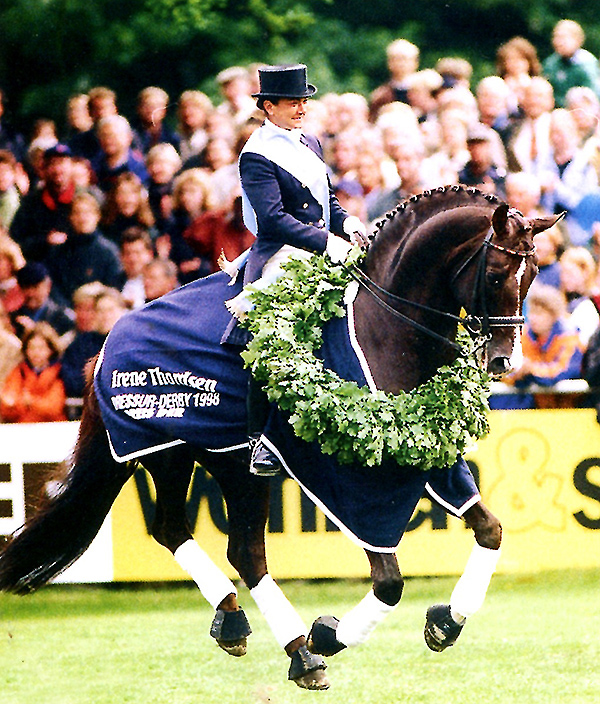
Donnerhall, successful in the competition arena, and an influential stallion
Do you think we’ve lost something that will never come back? When you took us around in the 80’s, the stallion station was the centre of the local community, it was where they got married, or buried, or just went for a drink – but it also created a local mare population that was very homogenous, so that you could instantly tell which stallion clicked with what mares, now with the stallion ‘covering’ mares all over the world, it is harder to see which crosses are going to work…
“And that is why it is important to have the FN breeding values – also the Hanoverian values which shows you the type, the gaits, and so on, that the stallion produces. In general I think we have made progress with artificial insemination, the quality of the stallions has improved tremendously – now a stallion that has not been top in young horse classes, or the licensing or the performance test, has no chance now. Artificial insemination has opened the door for every breeder to use any top stallion that he wants. The risk, I find, is that the younger stallions are over-used, there have been stallions that have been used before they’ve even had their performance test.”
“I think it is too much when a young stallion has 600 mares in his first year – but this is more a problem of the dressage breeders, and there I would like to see a little less excitement. Everybody is looking for the new superstar every year – and for me, this is too much.”
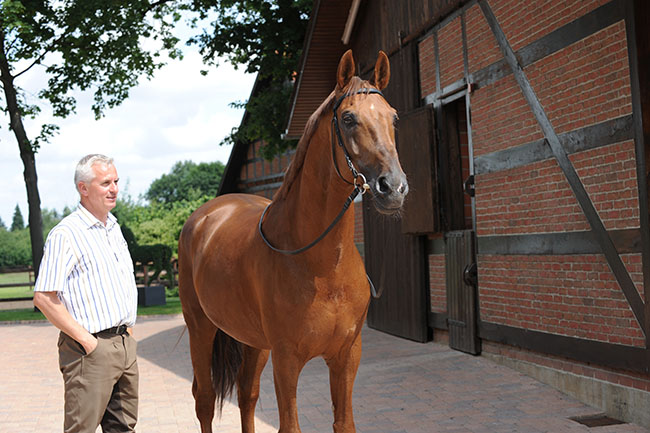
Wolfram Wittig and Breitling, successful in competition
On your criteria, Breitling would not have got any mares because he was not performance tested, or a young horse star… do you think with the concentration of more mares with less stallions, we get rid of the chance of discovering an out-cross like Breitling?
“I don’t think so. Breitling was presented as a young stallion and he did not pass the licensing, then later when he was so successful in competition, he was presented again, and they said, now we want him because he has shown that he is a very talented horse – and something like that can still happen.”
“Thirty years ago when a stallion was not licensed, then he had to be castrated, but now we are open enough to give a stallion a second chance. Sometimes you have stallions that are late in their development and some stallions that don’t look so spectacular in the beginning, get better under saddle. We are dealing with living beings and we have to see how they develop. We have also had disappointments, stallions that we thought were top when they were young stallions but they are not so good later on.”
Looking at your jumping stallions, aside from Stakkato Gold, who is looking promising?
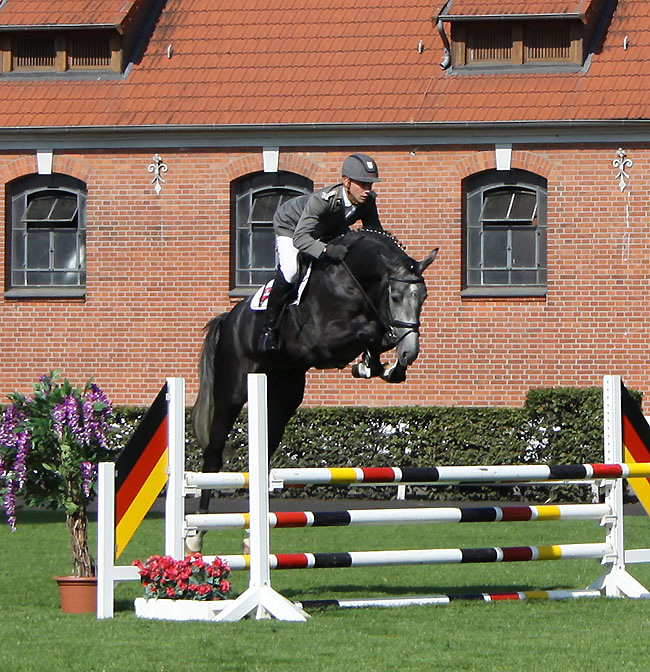
Diacontinus at home at Celle
“On the breeding values, Diacontinus is the highest ranked of the new stallions. He is by Diarado, but he is a different type from Diarado and he has produced very good foals. Grey Top is very promising. He did not jump 1.60 himself, but the State Stud has a disadvantage against the private studs, it is not a competition barn. There is a different task to fulfill, and it is not so easy to combine both. But when you look, Grey Top has produced around 600 foals for us for 186 horses that are successful in competition – the oldest can only be on the third level – and there are 64 progeny already at 1.30 and that is a very high number. He has already produced the double Bundeschampion for eventing, Gentleman, that is a fabulous horse.”
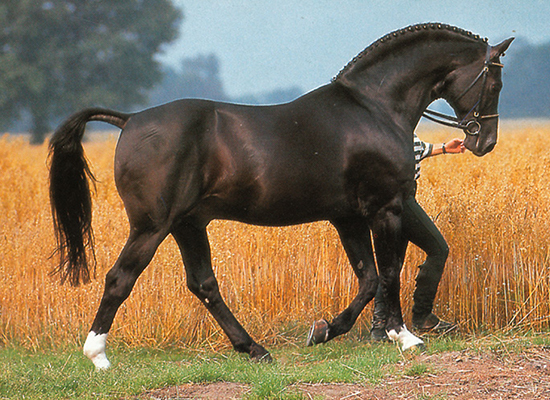
Grannus, the ‘G’ line is being continued
“We get good feedback from the riders, they are rideable, they are sound and they also have decent movement. I think he can be a good stallion to continue the Grannus blood, and the ‘G’ line.”
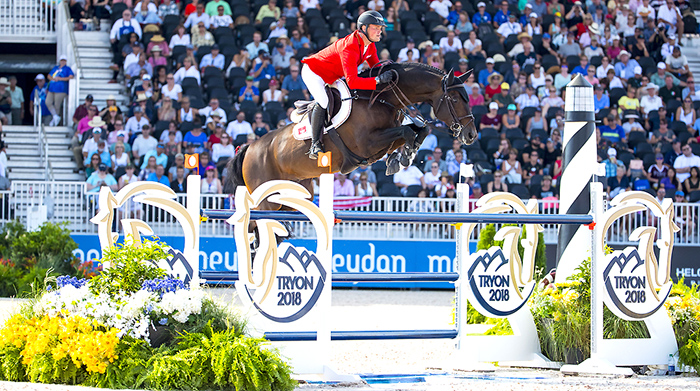
Don Diarado at Tryon
Diarado himself has been a flop in the competition arena, even coming from a stable that has produced top competition horses, he is not even competitive in 1.35/1.45 classes…
“But now he has produced some very good horses – Don Diarado, a Diarado son, for example,was named in the German team for the WEG with Maurice Tebbel.
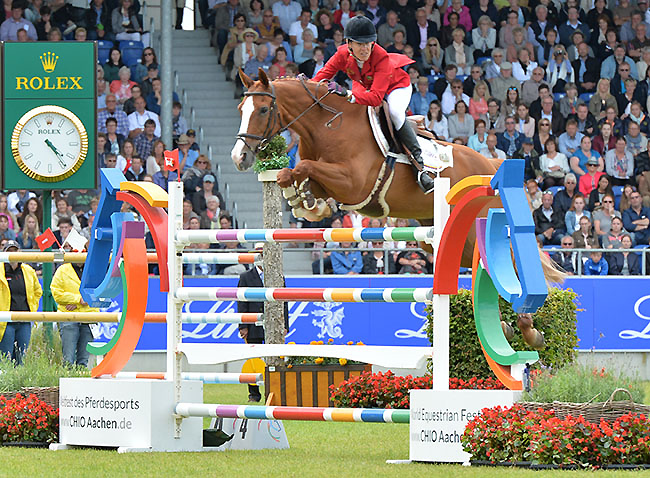
Another For Pleasure – Fit For Fun and Luciana Diniz competing at Aachen for Portugal
But you have to be careful, take For Pleasure for example, the breeders thought he was a super horse himself but not a producer, and he didn’t produce the horses for our young horse classes because they are not jumping in the desired style.”
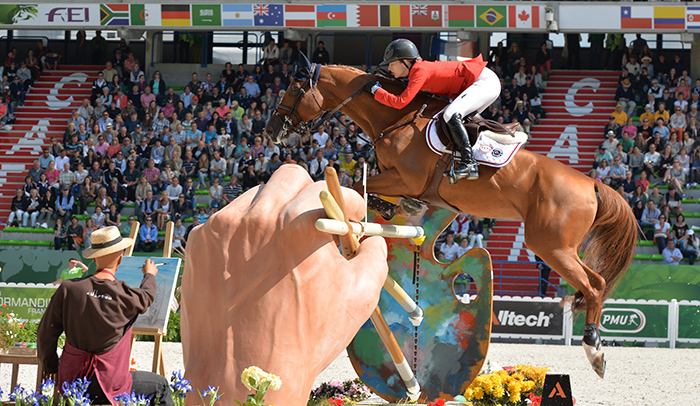
And another – Barron and Lucy Davis representing the US at the WEG in Normandy
“They would never win at the Bundeschampionate – but they are careful, they are scopey, they are sound and now he belongs to the top sires in the world. The For Pleasure bloodline is very important for Hanover, and the world.”
Many of the stallions discussed by Dr Christmann are available in Australia from International Horse Breeders.
Including
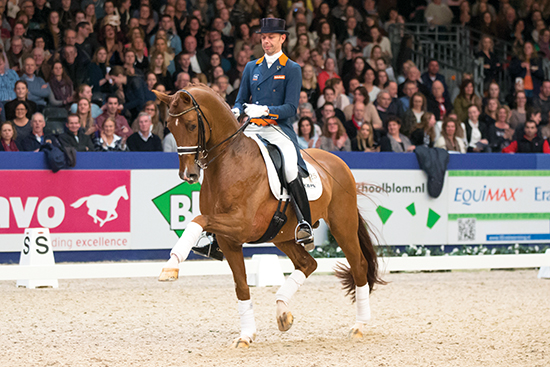
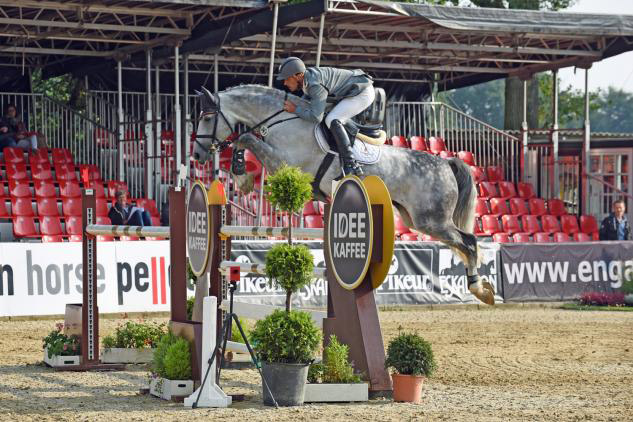
Diacontinus
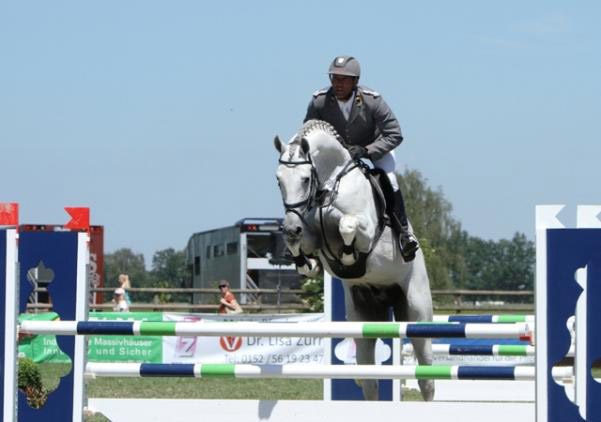
Grey Top

